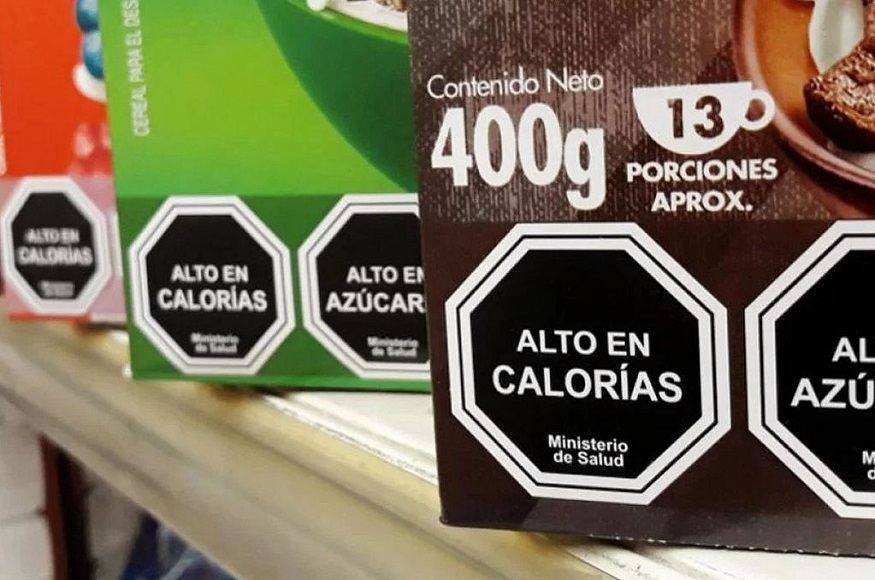- CatalogTop
Full catalog list - Food & BeveragePopular
Popular packed food and beverages
- Beauty & Self Care
Beauty and personal self-care products - Home & Garden
Home and garden supplies and accessories - Board Games
Most popular board games from Latin America - BrandsAll brands
Full list of all brands in the store. Browse all brands - IndustriesNew!
Filter products by desired business category - Services
See all services - See All Products
See full list of all products - Companies
Companies list
Latin America's journey to an informed nutrition

Latin America has produced highly significant changes in the health and eating habits of the population by implementing prevention measures, such as the application of Front-of-Pack (FOP) labeling laws to processed foods. Even though each country regulates the implementation of the law according to their needs and scope, each one agrees in some choices. The purpose of the warning symbols is to inform about the excess of determined components that, consumed in great amounts, might be dangerous for health, mostly sugar, fats, sodium and calories.
The Pan American Health Organization (OPS) provides technical support to its members in order to implement in a proper manner this new standards, with the objective of fighting and preventing different non-communicable diseases, linked to eating disorders, such as obesity, overweight, anemia and various forms of malnutrition.
In this way, the characteristic differences of the frontal labeling law of each country are highlighted below, in order to raise awareness about healthy eating and how each labeling model can affect the purchase and consumption of these foods.
Chile
Chile was the first country in the region to introduce the healthy eating program. In July 2012, the country approved the Nutritional Composition Law. This rule requires to declare the ingredients of the determined products on their packaging.
In 2016, Chile was the first Latin American country to implement the octagonal labeling system. Since then, local studies have demonstrated that industries have reduced the addition of damaging components on their products and that the public actively avoids processed foods that contain this symbol.

Another investigation that has taken place in the country has discovered that the more warning symbols a product has, the less it is bought. The least sold labels were those that state: "excess in sugar", followed by those that state "excess in calories".
The results in Chile showed a decrease of 25% in the purchase of sugary drinks, 27% in packed desserts and 14% in cereals.
In addition, it identified on average, a 25% reduction in sugars in the composition of the studied food categories.
This are the reasons why Chile has been taken as a role model by some other countries that have followed its steps.
Peru
Peru adopted the octagonal labeling in June 2018. After an arduous debate and lobbies of the food industry to decide the labeling models, the Congress approved the octagonal model that entered into force on June 17th 2019. The act establishes that processed foods that exceed the technical parameters of sodium, sugar and saturated fats must have an octagonal warning label that says "Avoid excessive consumption", and those with trans fats must read "avoid consumption".
"These octagons will allow, according to studies, to reduce the risks of cardiovascular diseases, diseases such as diabetes, and also, in our children, obesity" said Zulema Tomás, the minister of Health of the country.
In addition, Gustavo Rosell, the General Director of Strategic Interventions in Public Health of the Ministry of Health stressed that the Regulation of Healthy Eating establishes that none of the foods that carry the octagonal warning label can be marketed in Peruvian schools.
The technical parameters of the labeling of processed foods and non-alcoholic beverages contemplate four warnings: "High sodium", if solid foods contain at least 800 milligrams of this mineral per 100 grams and 100 milligrams for every 100 milliliters in the case of liquids; "High in sugar", if their presence exceeds 22.5 grams per 100 grams in solid foods and 6 grams for every 100 milliliters in drinks.
There will also be labels that state "High in saturated fats" for solid foods with six or more grams per 100 grams and drinks containing at least three grams per 100 milliliters; while the label "Contains trans fats" should always appear on all products containing these fatty acids.
Priority information to be found in the Front-of-Pack labeling:
Left to right: saturated fats, total sugars, energy, total fats, sodium, salt, fiber, trans fats, protein, added sugars, vitamins and minerals, salt/sodium, cholesterol, monounsaturated fats, polyunsaturated fats, fruits, vegetables, legumes, carbohydrates, potassium, calcium, iron, nuts.
Mexico
Mexico started its journey to the labeling system in June 2015, when the government adopted the industry labeling system in order to intensify the process of food labeling. In addition, in October 2019, the Senate approved the General health Law, that contemplates octagonal labeling.
However, in February 2020, the implementation of the law was temporarily suspended due to a protection action filed by the National Confederation of Chambers of Industry, until October of the same year, when the act officially entered into force.
Mexico based its predictions in the experience that Chile had been accumulating three years from the implementation of the Front-of-Pack labeling system in that country. However, Mexico's government made some alterations. While in Chile the labeling system includes four warnings (sugars, saturated fats, sodium and added calories), Mexico also includes a symbol for the trans fats.
Also, in Mexico, the warning symbols will be implemented in small packages as well, as it was estimated that between 80 and 85% of the products will count with at least one symbol.
Mexico has also banned the use of children's characters in the packages, as well as famous people's figures, athletes, sports players or mascots, interactive elements, such as visual games that might promote the consumption, purchase or election of products with a high amount of any of the mentioned nutrients.
Uruguay
In August 2018, the Uruguayan government approved a decree that establishes the use of the octagonal label on industrialized foods, which entered into force on March 1st 2020.
According to the National Bromatological Regulation, in Uruguay, any food that meets the following conditions must have the Front-of-Pack label: if it is packaged in the absence of the customer, if it is ready to be offered to customers in the national territory, that the current regulations require nutritional labeling, and that in its elaboration process or that of its ingredients, sodium, sugar or fats have been added and in whose composition in the final products the values established in the regulations are exceeded.

This is a flyer that was used in the campaign for the front food labeling law in Uruguay, and it says:
"Is it easy for you to understand the information in foods when you go to the supermarket?
Food Front-of-Pack labeling is a tool that allows direct, simple and fast information."

This flyer states: "Front-of-Pack Labeling protects people from deceptions that encourage the consumption of products with excess fat, sodium and sugar.
Clear information allows us to make healthier choices."
Argentina
On October 5th 2021, the Front-of-Pack labeling law was supposed to be voted but, due to the lack of quorum, the debate was postponed. However, on October 26, the act managed to pass and the term of implementation for industries is of 12 months.
Establishing the application of octagonal symbols, Argentina prepares to face the challenge of malnutrition in the country, adding the labels that state when a product contains caffeine or sweeteners, clarifying that these are not recommended for children.
Brazil
In Brazil, the new nutritional label regulation process was initiated in 2014. On October 9, 2020, the Directive Board of the National Health Surveillance Agency (ANVISA) unanimously approved new regulations on nutritional labeling of packaged foods. This rule aimed to facilitate the understanding of nutritional information and lead consumers to make more conscious food intake decisions. The label is designed to identify high contents of saturated fat, added sugar, and sodium. ANVISA chose these three nutrients because they represent the most critical ones to consumers' health. The picture shows the model that was proposed:
Ecuador
After revisiting the project because of the industry's opposition, the Ecuadorian government introduced the requirements for processed food packages to carry traffic light labels, framed and placed on a white or gray background, and are not required to be on the front of the pack.
Even though Chile was the first Latin American country to implement the octagonal FOP system, Ecuador was the first in the region to implement a summary information labeling system, and the first of the world to implement the traffic light label in August 2014.

After several studies, the researchers in Public Health Nutrition concluded that this type of label is an effective mechanism to communicate information about the fat, sugar and salt in processed food. Its simple graphical display uses a familiar and easy-to-interpret color scheme and text that contributes to the knowledge and comprehension that, sometimes, modifying attitudes, habits and practices related to the purchase and consumption of processed foods improves the health and the quality of life.
Bolivia
In January 2016, Healthy Eating Promotion Law was voted in Bolivia. It focuses on the prevention of unhealthy eating disorders such as malnutrition, obesity and diabetes, as well as encouraging physical activity and regulating food and non-alcoholic publicity.
In December 2017, traffic light labeling system was implemented.
The following image shows how the traffic light labeling system is applied to products:

Colombia
In 2020, the Ministry of Health of the country announced its intention of implementing a Front-of-Pack labeling system. However, it was still unclear which warning design would be the most effective in the Colombian population, to help consumers identify and make a choice about the purchase of products that might contain the potentially damaging nutrients.
In June 2021, the Congress approved a new Front-of-Pack labeling law in Colombia in order to warn consumers about the excess in different nutrients, such as sodium, sugars, calories and saturated fats.
The Act provides for the inclusion of warning seals on the front face of packages and wrappers of processed products. For now, it is not fully regulated and no generalization has been agreed as to the method of carrying it out. However, some companies were already ahead of time to reduce the amounts of sugars and fats and others stopped including children in their ads.
Central America
In November 2017, several representatives of the ministries of Health of Guatemala, El Salvador, Nicaragua, Honduras, Costa Rica and Panama have joined to elaborate an unified proposal for the front-of-package labeling system. However, the pressure of the industry to preserve the old nutritional information system has managed to defer this project.
Conclusion
Although it has been evident the progress that the region of the Americas has made so far, challenges still remain to be passed in adopting food labeling measures. "The food and beverage industry continues to strongly and broadly oppose regulations on labeling warnings on the front of the packaging. This includes covering up the harmful effects of food products with excessive amount of critical nutrients through multiple tactics, including the sponsoring of researches to minimize links to health problems. Disinformation and pressure from the food and beverage industry interfere with the country's efforts to adopt public health laws, regulations and policies.", as stated by the United Nations' Special Rapporteur on the right to health and human rights and transnational corporations and similar business enterprises.
Overcoming these obstacles and moving forward is critical to improving the health of the populations and reducing the burden of non-communicable diseases. This is of vital importance, given the increasing risk that people with these pathologies and associated risk factors, such as overweight and obesity, are more likely to get seriously ill from COVID-19 disease that puts us in context. As the UN Rapporteur on the right to health said, "warning labeling on the front of the package is a key step for States to address the burden of NCDs." Now is the time to act.
References
No posts found
Write a review© 2017 - 2024, Directoro.com, or its affiliates. Trademarks are the property of their respective owners.



